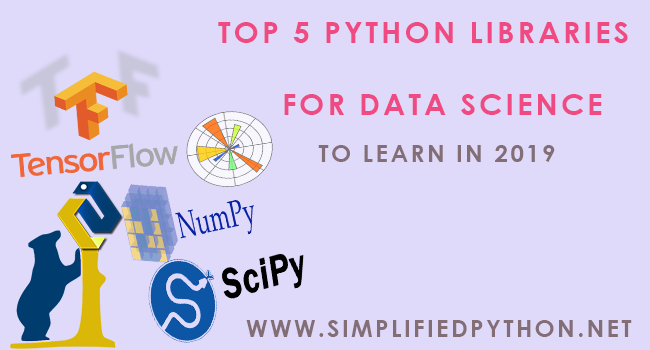Data science is a most demanding technology of this era. And due to this everyone should learn libraries related to data science. But choosing best libraries for beginners is a little bit difficult task.So in Top 5 Python Libraries For Data Science To Learn In 2019 post, you will know about 5 most popular libraries for data science, their features, applications and many more.
We all know better, how python programming language is gaining popularity day-by-day. It is a most highly demanded language in the field of IT. Python is an easy-to-learn, easy-to-debug, widely used, object-oriented, open-source, high-performance language, and there are many more benefits to Python programming. Python has a rich collection of libraries, which is helping programmers to develop latest applications everyday like GUI(Graphical User Interface), Desktop applications, mobile and web application, AI applications and many more. So let’s jump to main topic of this post, in this we will discuss about top 5 libraries for data science.
Check – Best Python Frameworks
Contents [hide]
Python Libraries For Data Science – A Quick Introduction To Data Science
Before proceeding to libraries, we must know about data science. So let’s start to know about the data science.
What Is Data Science ?
- Data science is a multidisciplinary blend of data inference, algorithm development, and technology in order to solve analytically complex problems.
- Data Science is primarily used to make decisions and predictions making use of predictive causal analytics, prescriptive analytics (predictive plus decision science) and machine learning.
- It is the process of deriving useful insights from data in order to solve real world problems.
Why Python For Data Science ?
Most of programmers prefer python over the other programming language for data science. So a question can arise in your mind is that why python is used for data science. And the answer is that python has following features which makes it suitable for data science.
- Less Code
- Platform Independent
- Easy To Learn
- Pre-built Libraries
- Massive Community Support
Check – What Can You Do With Python : Some Cool Things You Can Do With Python
Top 5 Python Libraries For Data Science To Learn In 2019
So here is a list of top 5 libraries for data science. If you want to master on Data Science then you must have to learn these libraries deeply. So let’s get’s started.
NumPy
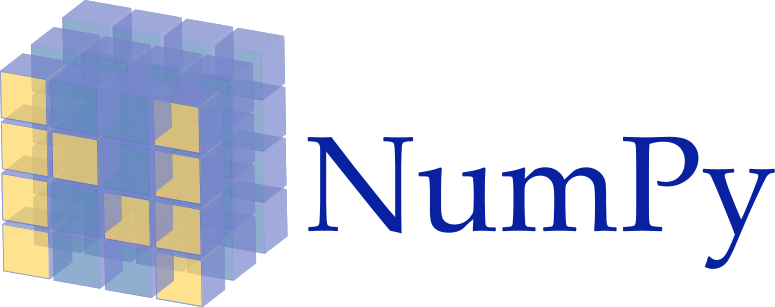
- NumPy stands for Numerical Python.
- NumPy is extremely popular python library in python community.
- It is heavily used in Scientific computing.
- It’s a general-purpose array-processing package that provides high-performance multidimensional objects called arrays and tools for working with them.
Features
- A powerful N-dimensional array object
- Sophisticated (broadcasting) functions
- Tools for integrating C/C++ and Fortran code
- Useful linear algebra, Fourier transform, and random number capabilities
- One can also use NumPy as a multi-dimensional container to treat generic data.
Applications
- It is extensively used in data analysis.
- It is also used to form the base of other libraries such as SciPy and scikit-learn.
Tensorflow
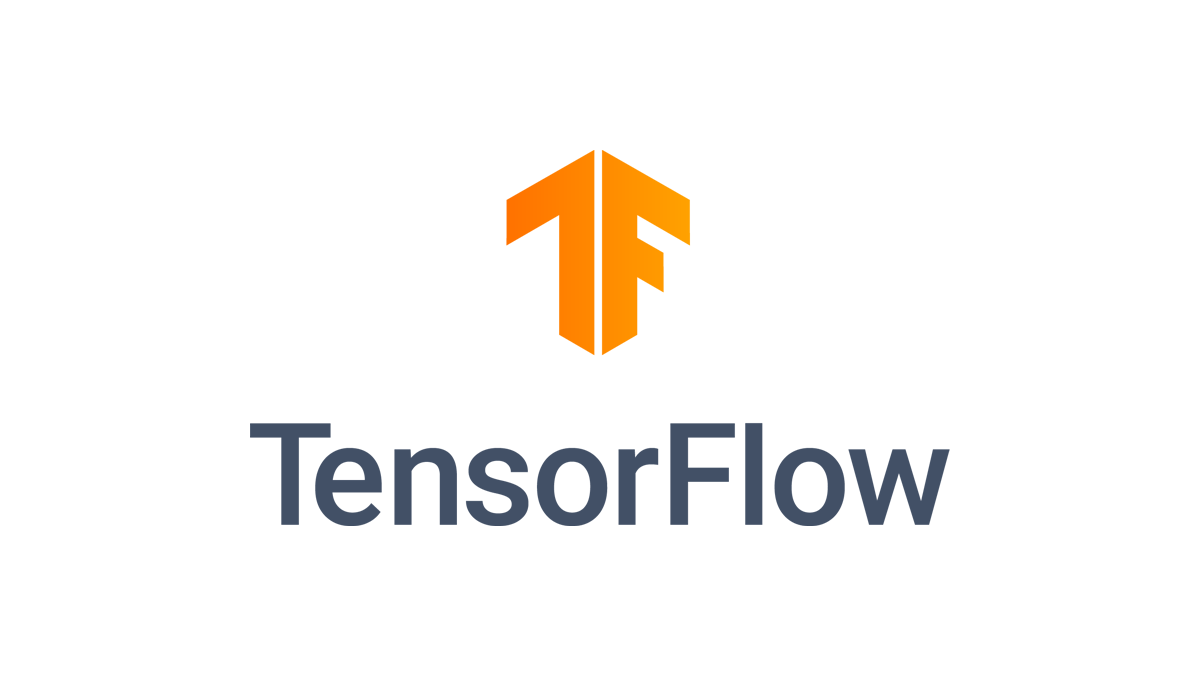
- Tensorflow is another important library for data science.
- This was designed by Google used to design, build, and train deep learning models.
- It is a python library that provides different types of functionality for implementing Deep Learning Models.
Features
- Easy model building
- Powerful experimentation for research
- The operations assigned to different nodes of a Computational Graph can be performed in parallel.
- Provide a better performance in terms of computations.
- Flexible Architecture
- TensorFlow provides a variety of different tool kits that allow you to write code at your preferred level of abstraction
Applications
- Sound/Video Recognition
- Image recognition
- Video Detection
- Time-Series Analysis
Check – Best Python Book For Beginners
PANDAS
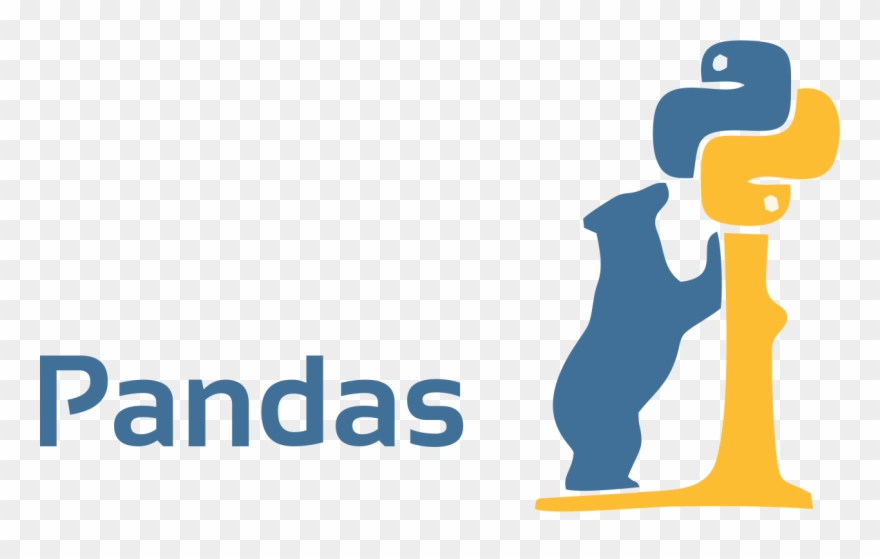
- The pandas library is the most important tool at the disposal of Data Scientists
- Pandas is built on top of the NumPy package, that means a lot of the structure of NumPy is used or replicated in Pandas.
- Data in pandas is often used to feed statistical analysis in SciPy, plotting functions from Matplotlib, and machine learning algorithms in Scikit-learn.
- The cool thing about Pandas is that it takes data (like a CSV or TSV file, or a SQL database) and creates a Python object with rows and columns called data frame. That looks very similar to table in a statistical software (think Excel or SPSS for example).
Features
- You can use pandas data structures, and freely draw on NumPy and SciPy functions to manipulate them.
- High-level data structures (data frames)
- More streamlined handling of tabular data and rich time series functionality.
- Data alignment, missing-data friendly statistics, groupby, merge and join methods.
- High-level abstraction
Applications
- Statistics
- Natural Language Processing
- Stock Prediction
- General data wrangling and cleaning
- Analytics
Matplotlib

- Matplotlib library is a graph plotting library of python.
- It is extensively used in data visualization.
- Using matplotlib we can plot different scatter plots, line graphs, bar graphs, pie chart and histograms .
- Using these plots we can visualize our data.
- It provides an object-oriented APIs for embedding plots into applications using general-purpose GUI toolkits like Tkinter, wxPython, Qt, or GTK+.
Features
- It has an ability to play well with many operating systems and graphics backends.
- Low memory consumption and better runtime behavior.
Applications
- Outlier detection using a scatter plot etc
- Visualize the distribution of data to gain instant insights
SciPy
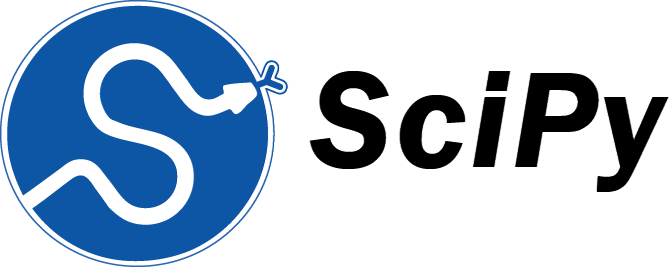
- SciPy(“Sigh Pie”) is a free and open-source Python library used for scientific computing and technical computing.
- The SciPy library is one of the core packages that make up the SciPy stack.
- SciPy contains modules for optimization, linear algebra, integration, interpolation, special functions, FFT, signal and image processing, ODE solvers and other tasks common in science and engineering.
Features
- Easy to use and understand as well as fast computational power.
- It can operate on an array of NumPy library.
- Classes, and web and database routines for parallel programming.
- It provides many user-friendly and efficient numerical routines such as routines for numerical integration, interpolation, optimization, linear algebra and statistics.
- Multidimensional image processing with the SciPy image submodule.
Applications
- Optimization algorithms
- Linear algebra
Check – 6 Best Python IDEs for Windows to Make You More Productive
Conclusion
So guys, we have discussed 5 most popular libraries for data science. Apart from these libraries, there are another useful libraries which are used in data science, such as Seaborn, Keras, Theano etc. Now if you want to be a data scientist then you must have sound knowledge of these libraries. These libraries are extensively used by data scientist.
So this was all about Top 5 Python Libraries For Data Science. I hope, now you have enough knowledge of these libraries. So if you found it helpful then please SHARE it with your friends. And let me know in comment section which library you are learning now and if you have any doubts about this post then feel free to ask your queries in comment section. Thanks

